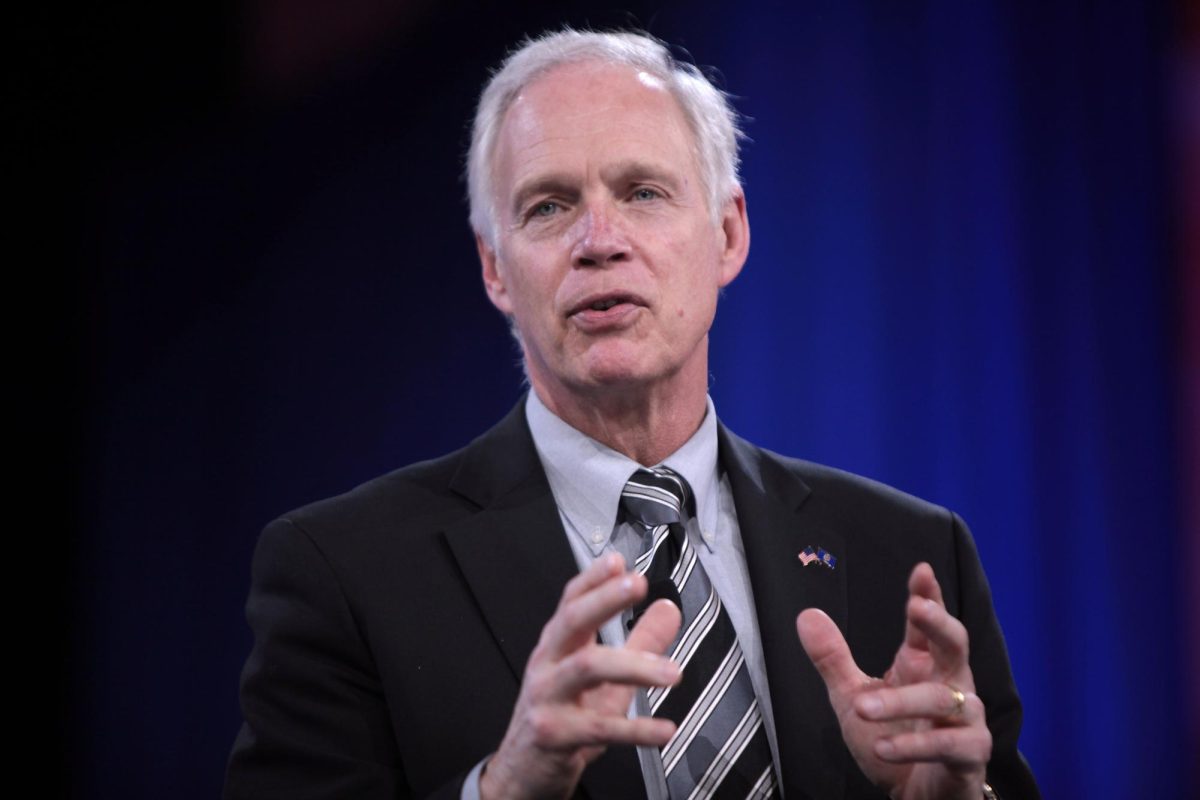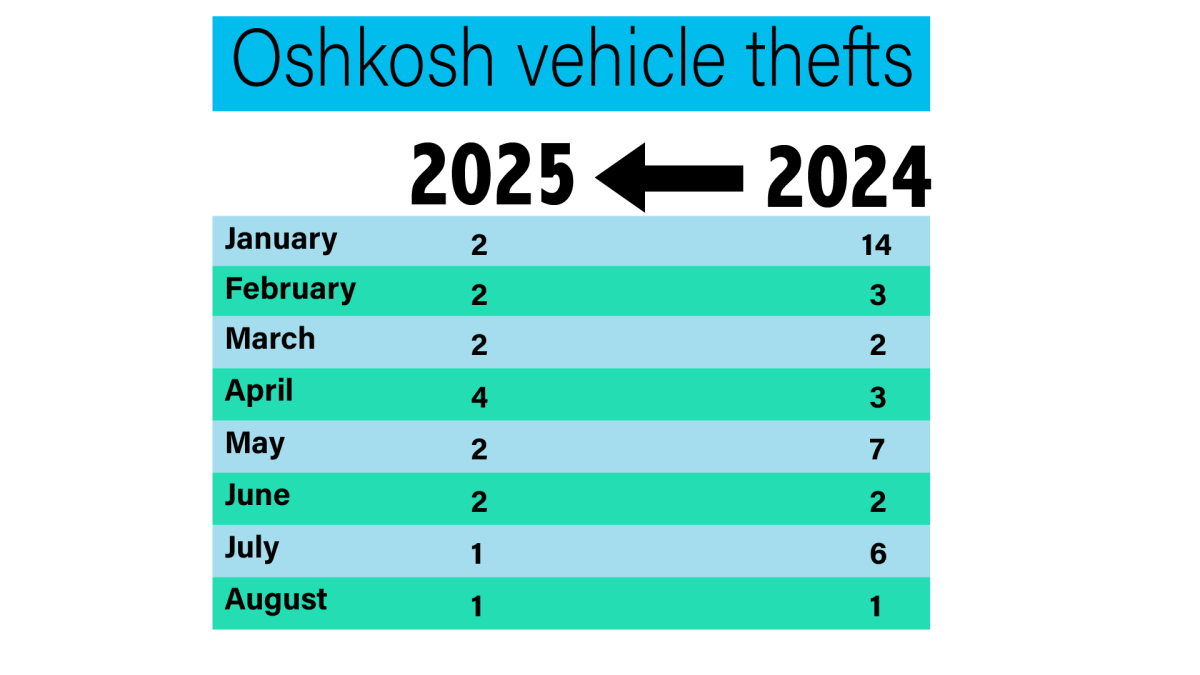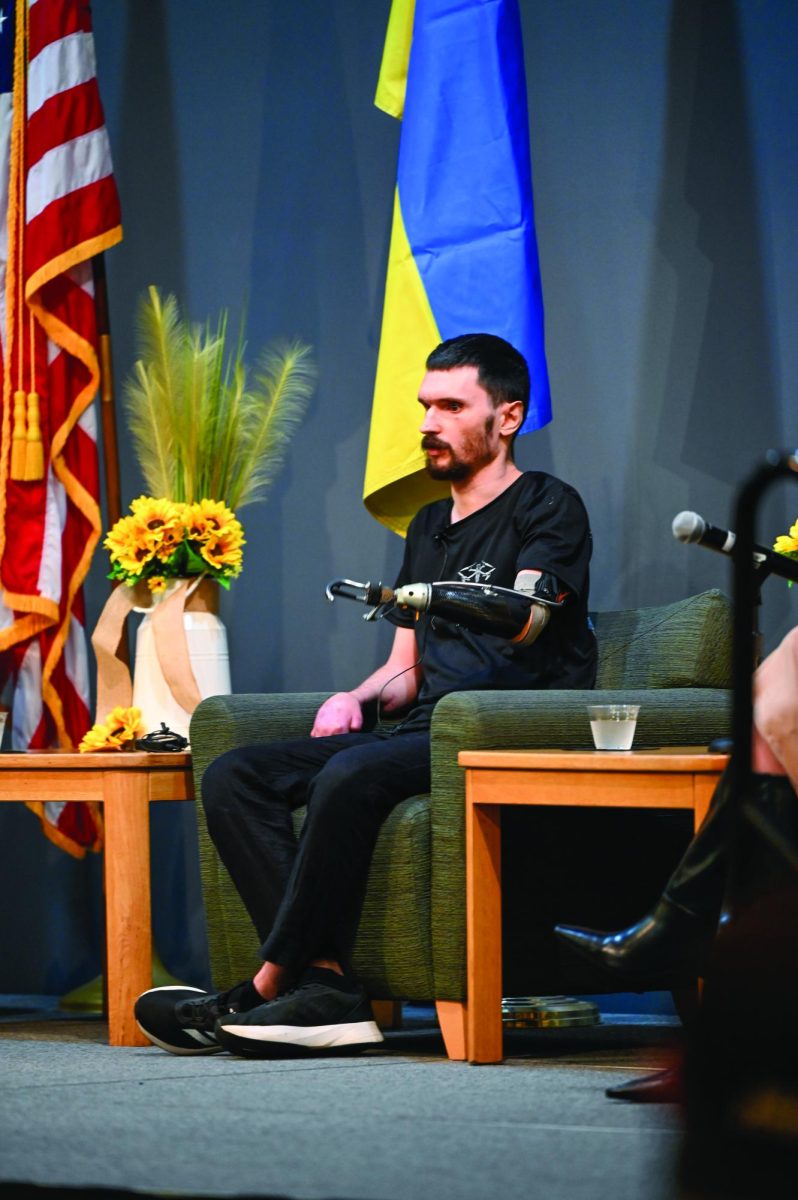Approaching a rack of jeans in a typical clothing store, women are automatically separated by tiny plastic signs that differentiate sizes. Some stores have the racks divided by size, while other stores have their clothing divided by sections, like junior’s, women’s and misses.
UW Oshkosh psychology student Jenna Meer said separating women into categories by their body shape and size can be damaging to their body image.
“It tears my heart apart just thinking about all these girls that feel this way,” Meer said. “It makes you feel insecure and it can prevent you from living your life to the fullest.”
One way clothing companies are attempting to make women feel better about their size is with courtesy sizing. The use of courtesy sizing, also known as vanity sizing, has been growing slowly over the past 50 years. According to an article by racked.com, sizes are different for every store and brand, and some stores make their sizes smaller than the average dimensions for that particular size.
“Every brand is different and, despite what the tag might say, no two sizes feel the same between retailers,” racked.com stated. “You could be a size eight at this place, a size six at that place and a size 10 somewhere else. It’s exhausting to try and keep track.”
Body image is a large issue in America, and courtesy sizing attributes to what women perceive as a healthy body image, according to DoSomething.org.
“Approximately 91 percent of women are unhappy with their bodies and resort to dieting to achieve their ideal body shape,” the article stated. “Unfortunately, only 5 percent of women naturally possess the body type often portrayed by Americans in media.”
Courtesy sizing can have a major affect on women’s self-esteem. Psychology professor at UWO and advocate for women’s studies Erin Winterrowd said media has a large influence on the self-esteem of women, especially teenagers and young adults.
“I don’t think there is any coincidence that this is targeting younger women,” Winterrowd said. “They are probably the ones most susceptible to it, and they are probably the ones talking the most about their sizes.”
Winterrowd said the concept of numbers is immensely important in the United States. She said as a social society, the U.S. likes to attach numbers to different aspects of our lives.
“We like numbers,” Winterrowd said. “We like quantifying things in a single number in particular. Other countries, they will use dimensions for sizing. It also comes out into play in intelligence testing. In other countries they will use multiple numbers, in the U.S., we use one number.”
Winterrowd said having a number on an item of clothing, regardless of what the number is, will automatically make a woman feel bad about herself.
“I saw a study at one point where it said that when women tried on clothing without sizes, they felt better about their bodies as opposed to when they tried on clothing with sizes, any sizes,” Winterrowd said. “So the issue there is, even if at one store, I’m a 12 and at another store I’m a 10, even the 10 is going to make me feel bad because it’s a number.”
Winterrowd said the number system in clothing is unrealistic because of the many different body shapes women have.
“This number, what I think is happening, is an [unrealistic] comparison,” Winterrowd said. “Other people have numbers too. If we think about healthy body shapes, we have the Marilyn Monroe or the Kim Kardashian… but healthy body shapes can be the pear, or the broad shoulders; it just depends on the woman.”
Winterrowd said courtesy sizing and body image issues are more prominent in younger women because they are who fit the “social cultural ideal body”.
“So what happens as a woman gets older, psychologically, they move out of the ideal social cultural age,” Winterrowd said. “So they are already ‘not pretty’ in that sense because they are 30 instead of 20. There are certainly eating disorder issues throughout peoples lives, but eating disorders peak in the early 20s and late teens, and we see very few middle aged women with eating disorders.”
Meer said she is an advocate for having a healthy body image and believes that it doesn’t matter what size you are as long as you are in good health.
“My opinion on body image is that as long as you are healthy, and your weight isn’t causing any physical harm to you, then the goal should be to accept your body and accept how you are,” Meer said. “I truly believe that every woman is beautiful and the only time that weight is ever an issue is if it causes physical harm.”
Meer said stores that courtesy size, or that heavily Photoshop their models, affect where she shops.
“Just knowing that they are showing girls for how they really are, I really appreciate that because it is so hard to see all that unrealistic Photoshopping and even for me, it makes me feel worse about myself,” Meer said.
Meer may applaud Aerie for discontinuing retouching their models, but said she believes that American Eagle’s clothing store does fall into the group of stores that practice courtesy sizing. Meer said she, too, has fallen victim to courtesy sizing.
“I would personally say that American Eagle is part of the courtesy sizing because I used to be able to go into American Eagle and wear a size four jean, but then I would go to Kohl’s or just a normal department store and have to buy a size eight to 10 in order to fit my waist line and leg length,” Meer said. “So, every time, I would never go into Kohl’s to buy anything then because I felt better about myself at American Eagle. From a psychological standpoint, it’s very damaging.”
Winterrowd said she has an issue with the term “plus-size model.”
“The pro of doing that is that you are recognizing that there is an ideal out there that is unattainable and false and that it is in contrary to it,” Winterrowed said. “The con is that you are somehow suggesting that this is not normal. It’s what we call in psychology sub-typing.”
Winterrowd said it would be better if clothing companies got rid of the different types of sizes.
“What the hell is a size zero? That doesn’t even make sense. What is it? Do we have a size negative two then,” Winterrowd said.
Store leader at Dressbarn Jamie Spagnola said Dressbarn is trying to help women get over their body image issues. Dressbarn’s motto is “inspiring women to look and feel beautiful every day.”
“I feel our mission statement says a lot about body image,” Spagnola said. “Having every associate knowing that they do make a difference in the way our customer’s see themselves. Sometimes it as simple as offering the styles that fit their body type or a sincere compliment.”
Spagnola said a simple compliment is a good way for women to build each other up and break the social normality of body image, rather than competing with each other.
“I’ve always had wonderful coworkers who give me compliments on my outfits, which make me feel good,” Spagnola said. Winterrowd said her best advice for women who are struggling with body image issues is to connect with other women in person and step away from media.
“The more women, especially younger women, interact with other real women, the better they feel about their bodies,” Winterrowd said. “The more they interact with fake women, women on paper, women on screens, women on radio, the worse they feel about their bodies.”








